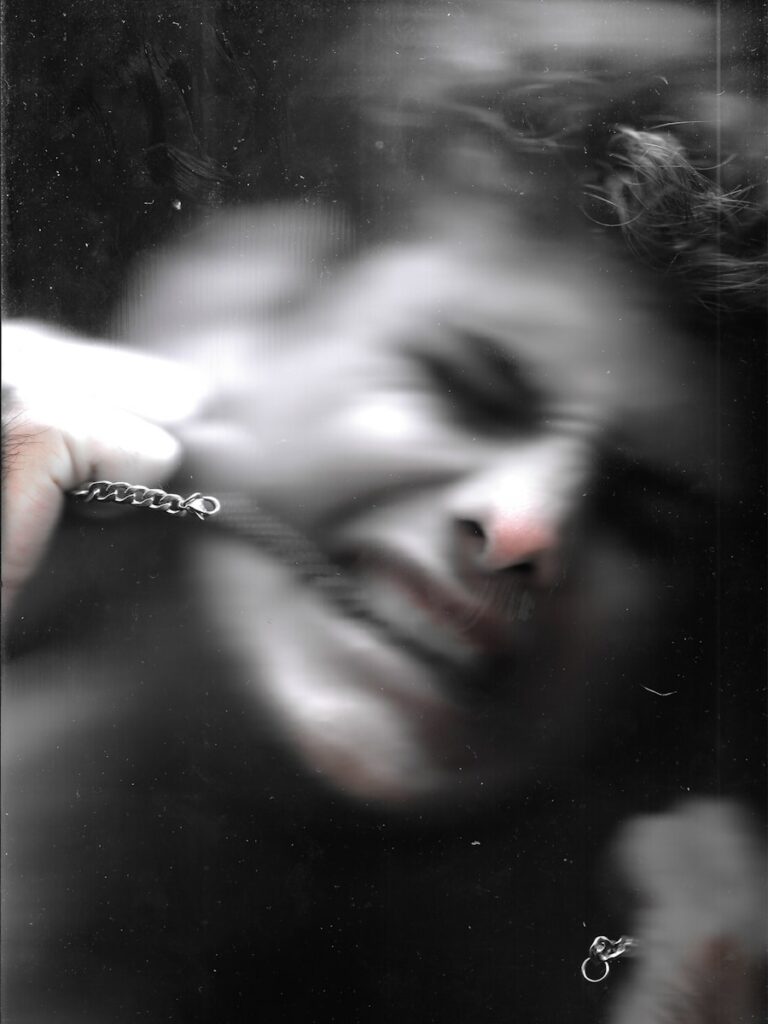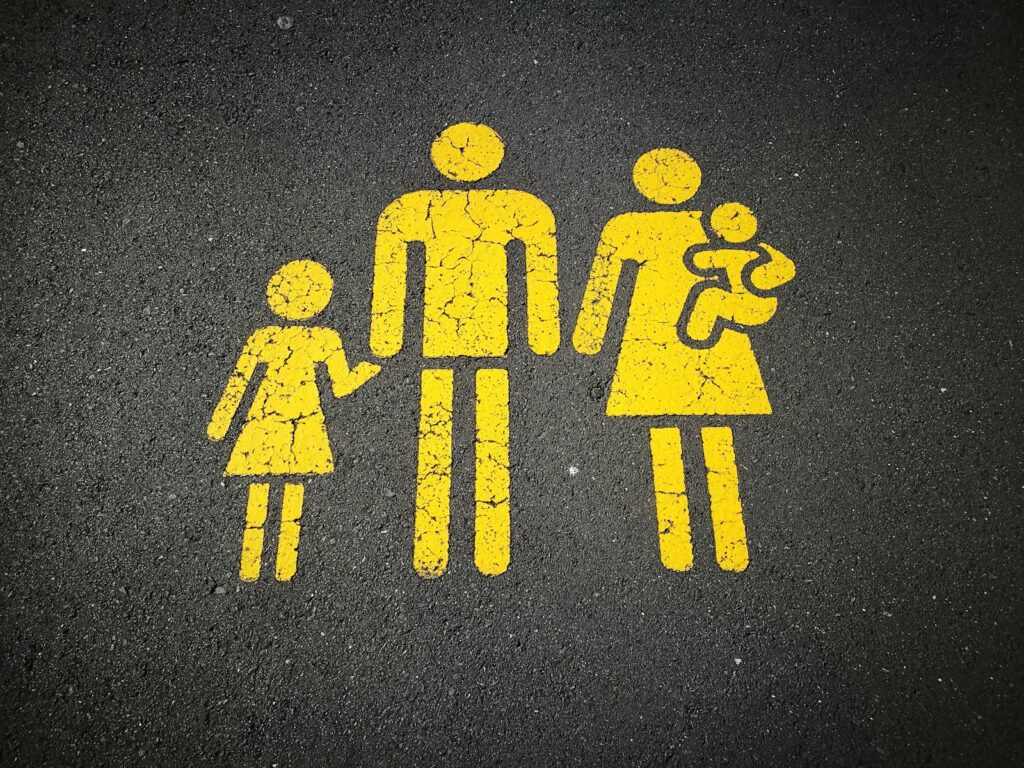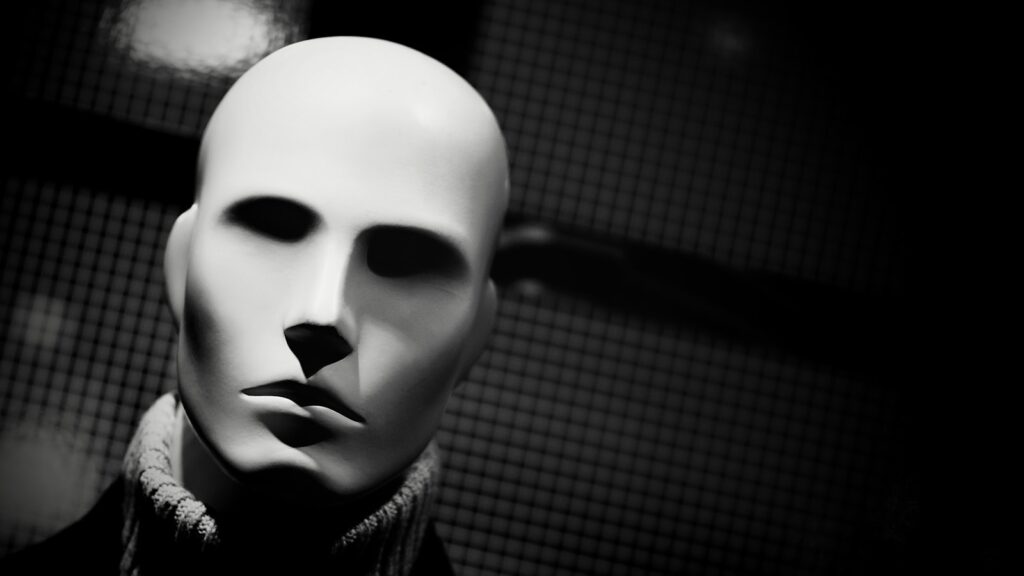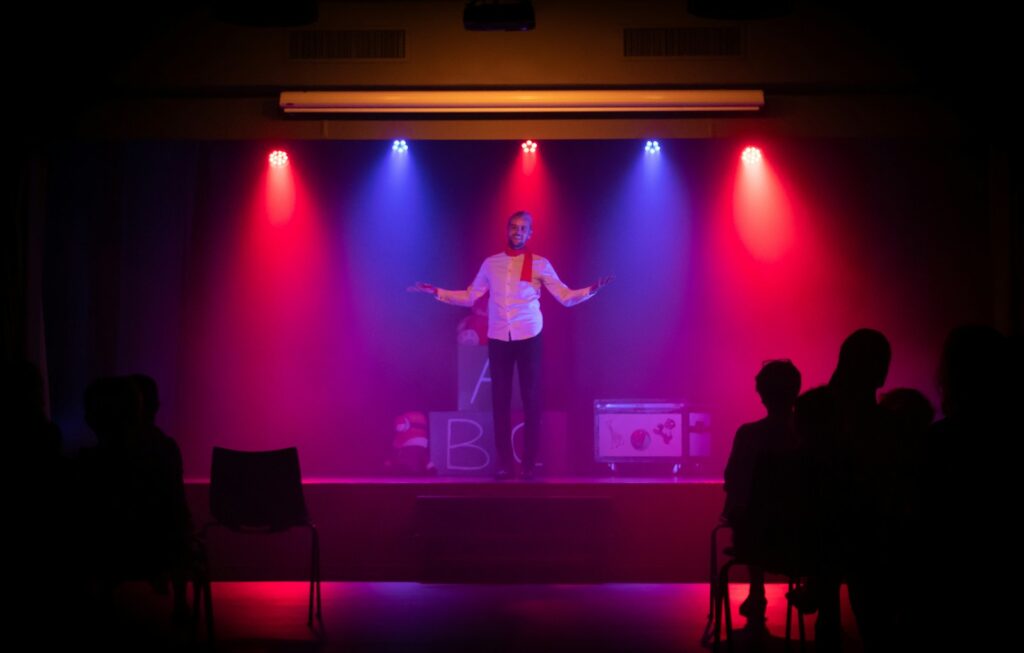
Jerry Lewis, a name synonymous with unparalleled comedic genius and boundless energy, brought an era of infectious laughter and whimsical escapism to millions around the globe. Widely hailed as one of the 20th century’s most electrifying and influential entertainers, his iconic slapstick routines and groundbreaking partnership with Dean Martin carved an indelible mark on the landscape of comedy. From the zany antics of his films to his tireless humanitarian work, Lewis crafted a public persona rooted in humor, compassion, and a larger-than-life creativity that seemed perpetually in motion. He was, to many, the beloved “King of Comedy,” whose movies undeniably filled the world with joy. Yet, beneath the veneer of this legendary showman lay a man of profound complexity, grappling silently with an array of personal demons and manufacturing narratives that would, for decades, obscure a far more intricate and often uncomfortable truth about his life.
Indeed, parsing fact from fiction about Jerry Lewis is, as Rick Saphire, who managed Lewis for his last decade and a half, aptly put it, “no easy feat.” Saphire, the author of “The REAL Jerry Lewis Story: A Memoir,” candidly notes that the internet and Lewis himself were the “two worst places to go for factual information” about the star. This investigative journey seeks to pull back the curtain on these carefully constructed myths, revealing the intricate tapestry of a life far more twisted and shadowed than his comedic brilliance ever let on. Through extensive research and insider perspectives, we uncover the hidden aspects of Lewis’s journey, from his obscured origins and the true genesis of his most famous partnership to the manipulative power plays that defined his ascent, ultimately presenting a more complete and often unsettling portrait of the man behind the mirth.
We delve into the compelling narratives of his early life, the foundational falsehoods he perpetuated, and the profound impact these deceptions had on his personal and professional world. This exploration serves not to diminish his artistic legacy, but to understand the full scope of a personality that was as brilliant as it was deeply flawed. Prepare to witness how Jerry Lewis’s jokes, far from being mere punchlines, often served as intricate veils, expertly woven to hide the raw, unvarnished truths of his remarkable, yet undeniably twisted, existence.

1. **The Fictional Foundations: Unpacking Jerry Lewis’s Invented Past**One of the most widely circulated falsehoods about Jerry Lewis, perpetuated across the internet and even by the comedian himself, concerned his birth name. Despite numerous online sources, including Wikipedia, claiming his real name was Joseph Levitch, the truth, as meticulously documented by Rick Saphire, reveals a far more dramatic and deeply personal origin. Lewis was, in fact, born Jerome Levitch, a name he actively sought to erase from public record for reasons rooted in a traumatic teenage incident.
As a young Jerome Levitch, Lewis was a notoriously “wacky kid,” frequently expelled from schools in Newark and Irvington, New Jersey, due to his mischievous antics. The pivotal event occurred at Irvington High School, where Lewis admitted on a TV program to beating up his principal. What Lewis didn’t fully disclose, however, was the supposed reason: the principal had allegedly made an ethnic slur about Jews, provoking Lewis to punch him with such force that the principal went “through a plate glass window and fell to the ground.”
Lewis was immediately expelled, and the consequences of this violent outburst haunted him for decades. For the rest of his life, Lewis believed he might have been responsible for the principal’s death, who tragically died a year after the attack. This profound guilt led him to continue perpetuating the myth of his birth name, Joseph, for years. What Lewis never knew, and what Saphire later tracked down, was that the principal’s death was caused by a “rare form of stomach cancer that he’d been diagnosed with a couple of weeks after Jerry attacked him.”
In 1943, unaware of his impending stardom and the true cause of the principal’s demise, Lewis made a calculated decision. He had a son in 1945, and with his family living in Newark, neighboring Irvington, he feared that his birth name, Jerome Levitch, had become “poison” due to the rumor that Jerome Levitch might have killed the principal. To protect his son from this stigma, Lewis began using Joseph Levitch, a fabrication that would endure and be echoed by Lewis himself for decades, obscuring the complex and guilt-ridden truth of his early life.

2. **The Real Genesis of a Comedy Legend: Setting the Record Straight on Martin & Lewis’s Debut**The tale of how Dean Martin and Jerry Lewis first teamed up on stage is another widely accepted anecdote that, according to Rick Saphire, is “totally untrue.” The popular narrative suggests that Lewis was working at the 500 Club in Atlantic City in 1946 when a singer fell ill, and Lewis, ever resourceful, recommended his friend Dean Martin as a replacement. This version of events, frequently repeated “forever,” not only misrepresents their debut but even gets the name of the establishment wrong, as it was still known as the 500 Cafe at the time.
In reality, by the time Lewis and Martin arrived at the 500 Cafe, they already possessed a significant three months of experience performing together. Their true origin story began in the vibrant, bustling atmosphere of the Havana Madrid Nightclub in New York City. It was the owner of this establishment, Angel Lopez, who played the pivotal role in bringing Martin and Lewis together, recognizing a unique potential in their individual talents.
Initially, they were billed separately, each performing their distinct acts. Dean Martin showcased his crooning prowess as a singer, while Jerry Lewis captivated audiences with his innovative “record mime” act, a simple yet effective gimmick where he would humorously mime singing to records playing off-stage. Their individual performances garnered modest success, laying the groundwork for what was to come.
However, it was during the “aftershow” segments, a more relaxed setting where performers could “let their hair down,” that the undeniable magic between Martin and Lewis truly began to blossom. Here, they would “clown together,” improvising and experimenting with their comedic chemistry, free from the constraints of their formal acts. This three-month period of organic, unscripted collaboration at the Havana Madrid was the true crucible that forged their legendary partnership, long before they ever graced the stage of the 500 Cafe, effectively rewriting the narrative of their iconic debut.

3. **A 1940s Scandal Shrouded: The Truth Behind Lewis’s First Marriage and Son’s Birth**Jerry Lewis’s first wife, Patty Palmer, was a well-known and popular big band singer, and their marriage date, along with the circumstances surrounding the birth of their eldest son, Gary Lewis, has been consistently misrepresented across various accounts. The pervasive inaccuracies stem from a deeply ingrained societal pressure prevalent in the mid-1940s, a period when the public perception of family life was meticulously guarded, particularly for figures in the burgeoning entertainment industry.
The core of the fabrication lies in the fact that Gary Lewis was born just three months after Patty and Jerry exchanged vows. In contemporary society, such a timeline might elicit little more than a passing observation, if any at all. However, in the moralistic climate of the 1940s, having a child “out of wedlock” was considered a devastating blow to one’s reputation, potentially a career-killer. Even if a couple married shortly after conception, the swift arrival of a child would inevitably lead people to “figure out that it wasn’t the full nine months,” igniting speculation and judgment.
This social stigma necessitated a deliberate and concerted effort on the part of Jerry and Patty to “cover their tracks.” The original context explicitly states that “they had to cover their tracks” due to the close proximity of their marriage date to Gary’s birth. This meant falsifying records, or at the very least, consistently providing incorrect information about their wedding year and Gary’s birth details to the public and media, thus creating a fabricated history to safeguard their nascent careers and personal standing.
The need for this concealment paints a vivid picture of the immense pressure celebrities faced to conform to strict societal norms during that era. It highlights how deeply ingrained moral standards dictated public narrative, forcing even rising stars like Jerry Lewis to construct an elaborate illusion around their personal lives to preserve their image and avoid scandal. The true story of their marriage and Gary’s birth thus became one of the earliest examples of Lewis’s life being shaped by carefully managed, albeit misleading, public information.

4. **The Shadow of Doubt: Lewis’s Intentional Obscuring of His Jewish Roots and Early Life**Jerry Lewis’s origins are, by many accounts, shrouded in a perplexing mix of confusion and conflicting information. Born on March 16, 1926, to Daniel “Danny” Levitch, an immigrant from the Russian Empire, and Rachael “Rae” Levitch, from Warsaw, both Jewish, Lewis’s early life beyond these basic facts remains remarkably murky. This ambiguity extends to fundamental details, such as the exact hospital of his birth, contributing to a sense of an intentionally obscured past that Lewis himself played a significant role in crafting.
The most glaring discrepancy centers on his birth name. While Lewis himself consistently claimed his birth name to be Joseph, several official documents from his early life, unearthed through later investigations, clearly list his birth name as Jerome. This contradiction is more than a simple matter of forgetfulness; it suggests a deliberate act of re-invention, a conscious effort to shape his personal narrative. The ambiguity surrounding these records, and the fading of memories over time, likely served Lewis’s purpose in this regard.
One compelling theory, as outlined in the provided context, posits that Lewis crafted his own story to “diminish his Jewish associations.” In an era rife with prejudice, it is plausible that Lewis, seeking broader appeal and perhaps to avoid the challenges associated with his heritage in the entertainment industry, strategically downplayed or altered aspects of his background. This act of self-redefinition highlights a calculated approach to his public image, beginning remarkably early in his life.
Lewis’s parents were both performers – his father in vaudeville and his mother a radio pianist. This performing lineage undoubtedly instilled in him an “impulsive sense of humor” and an inclination towards the stage from a young age. As a teenager, he developed a penchant for pranks and harmless trouble, signaling a natural gravitation towards the spotlight. This early immersion in entertainment, coupled with the societal pressures of the time, may have contributed to his willingness to manipulate his own story, laying a foundation of ambiguity that would color his entire life and public persona.

5. **Cracks in the Golden Facade: The Mounting Tensions Within Lewis’s First Family**When Jerry Lewis and Patti Palmer married on October 3, 1944, it seemed, on the surface, to be a natural and harmonious match between two burgeoning performers. Palmer, a singer, reportedly worked with Jimmy Dorsey’s Orchestra when she met Lewis, and together, they appeared to form a solid, show-business couple. Their family grew rapidly throughout the 1950s, with the couple having five biological children and adopting an additional son in 1949, creating the outward appearance of a large, happy, and successful family unit.
From an external perspective, their marriage might have been perceived as near-perfect, a testament to the stability and joy of their shared lives. However, this idyllic image belied a growing internal strain that intensified significantly as Lewis’s star began its meteoric ascent. The context explicitly states, “as Lewis’s star began to rise, the tensions within the home increased with it,” indicating a direct correlation between his burgeoning fame and the deteriorating harmony of his domestic life.
As Lewis became more absorbed in his career, the demands of celebrity, coupled with his own workaholic tendencies, began to take a heavy toll on his personal relationships. The focus on his professional life and the relentless pursuit of stardom often meant that his attention was diverted from his responsibilities and emotional commitments at home. This imbalance created a fertile ground for conflict, sowing the seeds of discontent that would eventually lead to profound rifts within the family.
These mounting tensions, though perhaps hidden from the public eye during the height of his fame, were the quiet cracks in the golden facade of his seemingly perfect marriage and family life. They foreshadowed the deeper, more complex issues that would later surface, revealing that the demands of his career often came at a significant cost to his closest relationships and the emotional well-being of his family.

6. **Unleashing the Bully: Jerry Lewis’s Ruthless Crusade Against Perceived Rivals**In 1950, as Jerry Lewis’s star was firmly on the rise, a new figure emerged on the theatrical scene who would trigger a dark and ruthless side of the comedian: Sammy Petrillo. Eight years Lewis’s junior, Petrillo bore a “striking resemblance” to the burgeoning star, a fact that Lewis did not find amusing. Instead of welcoming a fellow performer, Lewis viewed Petrillo as a “looming competition,” and he swiftly set out to neutralize this perceived threat to his carefully cultivated limelight.
Lewis’s unease with Petrillo was not subtle. In 1950, Lewis hired Petrillo to play his baby in a sketch for “Colgate Comedy Hour,” an interaction that Petrillo vividly recalled as abrasive. Petrillo recounted Lewis’s confrontational demeanor, stating, “Jerry said a couple of derogatory things to me. He said something to the effect of, ‘Don’t sign any checks and tell people you’re Jerry Lewis!’ He wasn’t being funny. He was being serious.”
This incident revealed a chilling aspect of Lewis’s personality: a deep insecurity that manifested as an aggressive, protective instinct over his burgeoning career. He was not looking to mentor or assist a young, look-alike talent; his clear intention was to “stop him” and prevent any potential challenge to his unique comedic identity. This early display of ruthless ambition demonstrated Lewis’s willingness to use intimidation to maintain his position at the top.
Lewis’s actions against Petrillo were a stark indicator of his “deep insecurities” and the “childhood wounds of loneliness and worthlessness” that Shawn Levy, author of “King of Comedy: The Life and Art of Jerry Lewis,” highlighted. These underlying vulnerabilities fueled Lewis’s need for control and his aggressive stance against anyone he perceived as a threat. The interaction with Petrillo was not an isolated incident but an early, telling glimpse into the manipulative power plays that would come to define Lewis’s approach to competition throughout his career.
7. **Manipulative Power Plays: How Lewis Orchestrated the Downfall of Competition**Despite the initial harshness, Petrillo, still a minor at only 16 years old, was eventually persuaded to sign with MCA, Jerry Lewis’s own talent agency, after reading a positive write-up in Variety magazine. This seemingly fortuitous turn of events, however, backfired spectacularly. Lewis had promised Petrillo work, but these opportunities never materialized. The reality of the situation was far more sinister than Petrillo could have imagined at the time: Lewis was actively engaged in “keeping him on the shelf,” a deliberate strategy to prevent the young look-alike from ever finding work and, crucially, from ever jeopardizing Lewis’s career.
This manipulative tactic underscores Lewis’s fierce determination to eliminate any perceived competition, even resorting to underhanded means to control another performer’s professional trajectory. It was a clear demonstration of the extent to which Lewis would leverage his growing influence and power within the industry not to build, but to dismantle. Petrillo’s father, recognizing the malicious intent, eventually intervened and got his son out of the restrictive contract with Lewis’s agency.
Freed from Lewis’s clutches, Petrillo continued to string together small performances and eventually paired up with singer Duke Mitchell, forming a duo. Recognizing the similarities between themselves and the now-successful Martin and Lewis, they decided to incorporate impersonations into their act. However, their act was diverse, mimicking many famous figures, and when they did parody Martin and Lewis, they cleverly inverted the roles, with Petrillo mimicking Martin and Mitchell mimicking Lewis, aiming for humor rather than direct competition. Yet, this nuance was lost on Lewis and Martin, who did not find it amusing.
Lewis, however, was far from done. His eldest son, Gary, later confirmed the extent of his father’s grudge, stating, “Whenever there was any mention of Sammy Petrillo, it was a tense moment.” Following Petrillo and Mitchell’s film “Bela Lugosi Meets a Brooklyn Gorilla,” Lewis used his “considerable influence to blackball them whenever he could.” This calculated and sustained effort to destroy the careers of young performers he saw as rivals paints a stark picture of Lewis’s dark, controlling, and deeply insecure nature, revealing a pattern of bullying that extended beyond mere verbal threats to the systematic killing of careers.

8. **The Crushing Collapse of Martin & Lewis: A Partnership Torn Asunder**By the spring of 1956, the once-unbreakable bond between Jerry Lewis and Dean Martin was severely strained, reaching a boiling point that would soon lead to their dramatic separation. As their collective fame ascended to unprecedented heights, the spotlight began to shine with an increasingly intense glare specifically on Lewis, often leaving Martin feeling relegated to the sidelines. Media portrayals did little to assuage these tensions, frequently framing Lewis as the singularly talented force, while subtly implying Martin was merely a charming appendage, a sentiment that deeply wounded the crooner’s pride.
This mounting friction culminated in a particularly brutal incident in 1954, an event that frayed Martin’s already raw nerves to an unbearable degree. Look magazine, a publication with immense reach, chose to feature the iconic duo on its cover. However, in a stark and telling display of the growing imbalance, they published a photo that entirely cropped Martin out, focusing solely on Lewis. This audacious editorial decision, transforming a promotional image of two partners into a solo spotlight for Lewis, became an unmistakable symbol, marking what was undeniably the beginning of the end for the legendary comedy team.
Their final cinematic collaboration, *Hollywood or Bust*, proved to be a fittingly tumultuous experience, utterly devoid of the joy and camaraderie that had once defined their work. Lewis, increasingly prone to dictatorial tendencies, took his frustrations out on the film’s director, while Martin, his patience exhausted, famously snapped at Lewis, declaring him “nothing but a […] dollar sign.” The palpable animosity between them made the filming process a grueling ordeal, a stark contrast to the effortless magic that had once captivated audiences. Following this ill-fated picture, they fulfilled a small series of pre-arranged engagements at New York’s famed Copacabana Club, which served as their poignant and bitter farewell performances.
Indeed, exactly a decade after they first joined forces, Martin and Lewis performed their last show together, and the comedy world watched as Lewis was left to navigate his career on his own. The depth of the estrangement was further underscored when Lewis, intending to cast Martin in his 1957 film *The Delicate Delinquent*, offered him the role of a uniformed police officer. Martin, incredulous, reportedly responded, “We’re partners. I should at least be a detective!” Lewis, however, was unyielding, stating, “No, that’s the part.” This perceived slight, as recounted by Dean Martin’s daughter, Deana Martin, was the undeniable “straw that broke the camel’s back,” cementing the painful dissolution of one of entertainment’s most beloved partnerships.

9. **A Solo Star’s Stumble: Lewis’s Crisis of Confidence After the Split**The immediate aftermath of the Martin & Lewis split was far from the triumphant solo launch one might expect for a star of Jerry Lewis’s magnitude. Having spent a decade building his career in lockstep with Dean Martin, their intertwined professional identities meant that the separation left Lewis profoundly adrift. Rather than feeling liberated and ready to shine, Lewis found himself grappling with a debilitating crisis of confidence, admitting, “I was unable to put one foot in front of the other with any confidence. I was completely unnerved to be alone,” a candid reflection on the profound void left by his partner’s absence.
This paralyzing self-doubt meant that Lewis, despite his undeniable talent, was wary of stepping back onto the stage alone. He had not sung solo in twenty-five years, accustomed to always having an accompanist, even before Martin, and certainly, a partner throughout their comedic reign. His hesitation was understandable, given the deeply ingrained professional identity he had cultivated. It would take an unexpected intervention, a twist of fate orchestrated by another legendary entertainer’s manager, to provide the crucial push Lewis needed to reclaim his footing.
The fortuitous opportunity arose when Lewis and his wife were vacationing in Las Vegas. Sid Luft, the manager (and husband) of the incomparable Judy Garland, reached out to Lewis in a moment of crisis: Garland had fallen ill with strep throat and was unable to perform her scheduled show. Luft, desperate to save the night, implored Lewis to step into her place, an invitation that must have simultaneously thrilled and terrified the comedian who, just weeks prior, felt utterly unnerved by the prospect of being alone on stage.
Despite his deep-seated reservations, Lewis accepted the challenge, and that night proved to be the pivotal turning point. He channeled his boundless energy into an impromptu performance, clowning around with his signature antics and singing some of the songs he had known since boyhood. The audience’s reaction was nothing short of explosive, showering him with the adulation and laughter he craved. This unexpected triumph reignited Lewis’s self-belief, giving him the courage to confidently pursue a solo career, proving to himself and the world that he could indeed make it without a partner. Opportunities, as if on cue, began to knock once more, heralding a new phase of his extraordinary journey.

10. **The Architect of Anarchy: Lewis’s Unprecedented Control and Cinematic Revolution**With his confidence rekindled and a newfound solo path forged, Jerry Lewis rapidly established himself as a bona fide performer who could captivate audiences without Dean Martin. He embarked on a prolific period, recording a series of albums in the late 1950s and launching a new phase of his career focused on solo live performances at prestigious venues like the Sands Hotel and Casino in Las Vegas. These live shows would become a staple throughout the remainder of his career, yet he never forgot his ambitions for film, where he would soon carve an entirely new identity.
Lewis graced television specials and hosted the revered Academy Awards three times between 1956 and 1959, solidifying his stature as a singular entertainment force. He remained at Paramount Pictures, embarking on a series of solo film projects, and in 1959, he secured an extraordinary contract that granted him unprecedented creative control over his future films. This groundbreaking deal also cemented his status as the highest-paid individual in Hollywood at the time, a testament to his immense popularity and commercial appeal. It seemed Lewis had reached the pinnacle of stardom, yet he was poised to climb even higher, revolutionizing filmmaking in the process.
A pivotal decision by Paramount in 1960 unwittingly sparked Lewis’s directorial genius. Having filmed *Cinderfella* as the studio’s planned summer release, Paramount abruptly decided to hold it back for Christmas, creating an unexpected void in their production schedule. The studio, facing a sudden gap in their lineup, demanded that Lewis deliver another film to fill it. Lewis, ever the showman, rose to the challenge with astounding success, embarking on a creative endeavor that would permanently alter the landscape of cinematic production.
In response to Paramount’s urgent demand, Jerry Lewis conceived, starred in, directed, co-wrote, and produced *The Bellboy*, a project undertaken with a minuscule budget and an impossibly tight filming schedule. He found himself performing live at night while filming during the day, a grueling pace that seemed to defy the limits of human endurance and the technological constraints of the era. Completing such a film on time appeared an impossible feat, at least with existing methods. Lewis recognized he needed something revolutionary, a new approach to moviemaking that matched his relentless ambition.
To overcome these hurdles, Lewis innovated, creating a film that deliberately minimized dialogue, focusing instead on his unparalleled physical comedy, as his character spoke only a single line at the very end. This not only saved precious filming time but allowed him to lean into his strengths. Crucially, Lewis employed the then-nascent technology of video monitors to instantly review his scenes, eliminating the protracted wait for “dailies” and allowing for immediate reshoots. This groundbreaking technique enabled Lewis to develop a new, efficient style for both acting and creating films, earning him immense popularity in France, where critics heralded him as an artist who understood how to transform film into a true art form, despite Paramount’s initial skepticism.

11. **The Unmasked Lothario: Lewis’s Flagrant Infidelities and Personal Confessions**Beneath the veneer of his public success and comedic brilliance, Jerry Lewis harbored a complex personal life, marked by a pervasive pattern of infidelity that would ultimately unravel his long-standing marriage. Evidence of his extramarital affairs surfaced early, perhaps most strikingly with the revelation concerning Lynn Dixon Kleinman, who had a daughter named Suzan in 1952. Lewis’s eldest son, Gary, later confirmed through DNA testing that there was an 88.7% chance Suzan was his father’s daughter, a stark indicator of Lewis’s secret life even as his career soared.
As the years progressed, Lewis, perhaps feeling less constrained by public scrutiny in his later life, openly confessed to numerous relationships with Hollywood luminaries. In interviews, he casually revealed affairs with iconic stars such as Marlene Dietrich and, perhaps most famously, Marilyn Monroe. He didn’t shy away from the intimate details, responding to a question about his time with Marilyn by saying, “It was long,” and then, after a deliberate pause, provocatively added, “I was crippled for a month!” These candid admissions painted a vivid picture of a man who pursued his desires with little regard for the sanctity of his marriage vows.
Beyond these acknowledged affairs, Lewis’s on-set behavior often exhibited a disturbing pattern of leveraging his power. During a costume fitting for the 1964 film *The Disorderly Orderly*, while still married to Patti Palmer and a father of six, Lewis made an unwelcome advance on actress Karen Sharpe. Sharpe vividly recalled, “He grabbed me. He began to fondle me. He unzipped his pants. Quite frankly, I was dumbstruck,” a chilling account of an incident that underscores a deeply unsettling side of his personality. After Sharpe rebuffed his advances, she observed his fury, but instead of firing her, Lewis orchestrated a cruel punishment: forbidding the entire cast and crew from speaking to her for the weeks-long filming, demonstrating a manipulative use of his authority.
Despite his flagrant disregard for marital fidelity, Jerry Lewis remained married to Patti Palmer for nearly four decades. However, in 1980, Palmer finally reached her breaking point, initiating divorce proceedings on the grounds of his explicit disregard for their marriage and his excessive spending. The prolonged and painful process eventually concluded three years later, signaling the end of a tumultuous union that had endured the entirety of Lewis’s rise to superstardom and his most prolific years.
Yet, Lewis did not wallow in the aftermath of his divorce. He swiftly moved on, marrying Sandra “SanDee” Pitnick, a stewardess and professionally trained ballerina he had met on the set of his film *Hardly Working* in 1983. The couple later adopted a daughter in the early 1990s, and Lewis, it seemed, never truly looked back at his first family, a decision that would carry profound and heartbreaking consequences in the years to come, particularly for his sons.

12. **A Legacy of Neglect: The Painful Abandonment of His Six Sons**The full, heartbreaking extent of Jerry Lewis’s fractured family relationships was laid bare following his death in 2017. In a final, shocking act of cruelty, Lewis executed a will that completely disinherited his six biological sons and their families, leaving his entire estate exclusively to his second wife, SanDee Pitnick, and their adopted daughter. While this public revelation sent shockwaves through the entertainment world, it came as little surprise to his own family, who had long endured a complex and often painful relationship with their father.
Indeed, the disinheritance was simply the bitter culmination of decades of emotional distance and perceived abandonment. Following Lewis’s passing and the controversial will, several of his sons came forward, offering rare glimpses into the reality of life with the legendary comedian. Anthony Lewis, his youngest son, spoke candidly about his father’s unpredictable nature, stating that his children never knew which version of Lewis would come home. He went as far as describing his father as emotionally abusive, yet, remarkably, still held a measure of warmth for him, a nuanced perspective shared by few of his siblings.
Anthony expressed profound regret that Lewis had completely cut him off from his life, lamenting the lost opportunity to tell his late father that, despite all the pain and rejection, he still loved him. However, his elder brother, Gary Lewis, harbored much harsher sentiments, offering a far more scathing assessment of their father. Gary emphatically called Lewis a “mean and evil person,” insisting that the comedian never demonstrated any love or genuine affection toward any of his children, painting a portrait of a father emotionally devoid and self-absorbed.
Gary Lewis attributed his brother Joseph’s tragic death from a drug overdose in 2009 directly to their father’s neglect. He tragically proclaimed, “He was never loving and caring toward me or my brothers.” Gary speculated, “I don’t know if Joe’s death is drug related, but I believe it could have been prevented if he and my father had been on better terms. I believe he partly died of a broken heart,” a damning indictment that spoke volumes about the emotional wounds Lewis inflicted. He further added, “[My father] doesn’t really care. He’s more worried about his career and his image than his own family.”
In a rare reflection on Joseph’s passing, Jerry Lewis himself offered a nuanced, albeit somewhat detached, perspective. He stated, “To this day I don’t understand it because it’s unfair—not unfair to me, but unfair to him. That he went that way made the unfairness stupidity.” He concluded with a poignant, yet ultimately defensive, tone, “But he was my son and he’s gone, and there’s not a lot I can do about that. I beat myself a thousand times,” a statement that, for many of his children, likely felt insufficient in acknowledging the depth of his familial failings.

13. **Allegations of Darkness: On-Set Abuse and the Shadow of Power**While Jerry Lewis’s public image was meticulously cultivated to embody childlike innocence and comedic genius, a far darker narrative began to emerge after his death, particularly concerning his behavior on film sets. In 2022, several of Lewis’s former co-stars from the 1960s, a period when he was a prolific solo artist, came forward with serious allegations. These accusations included harassment, verbal abuse, and even sexual assault, painting a chilling picture of a powerful man who allegedly abused his authority. *Vanity Fair* reported on these claims, though Lewis, no longer alive, could not speak in his own defense, leaving the allegations unresolved in a legal sense, yet casting a long shadow over his legacy.
The detailed account of actress Karen Sharpe, from the 1964 film *The Disorderly Orderly*, serves as a stark illustration of the kind of on-set behavior Lewis was capable of. Sharpe recounted an incident during a costume fitting where Lewis physically assaulted her, describing how he “grabbed me,” “began to fondle me,” and “unzipped his pants.” Her feeling of being “dumbstruck” highlights the shocking nature of the encounter. When Sharpe refused his advances, Lewis’s fury was evident. Instead of direct retribution, he employed a crueler, more manipulative tactic, forbidding the entire cast and crew from speaking to her for the duration of the weeks-long filming, isolating her completely and weaponizing his power in a deeply vindictive manner.
Shawn Levy, author of *King of Comedy: The Life and Art of Jerry Lewis*, provides crucial context for such behavior, explaining that Lewis “bullied employees, journalists, young performers, and anyone else he felt had less power than him because he could.” Levy links this aggressive impulse to Lewis’s deeply ingrained “childhood wounds of loneliness and worthlessness,” suggesting that his need for control and dominance stemmed from profound insecurities. This perspective underscores a tragic irony: the man who brought so much joy to the world often inflicted pain on those around him, a byproduct of his own unresolved traumas.
Lewis himself, in his 2006 memoir *Dean and Me: A Love Story*, offered a rare glimpse of self-awareness regarding the corrosive effects of his unchecked power. He admitted, “When fame and money come all at once, even the strongest men will get their heads turned around,” a statement that inadvertently speaks to the trajectory of his own life. The numerous allegations and personal accounts paint a consistent picture of a celebrity who, as he grew more powerful, also grew more prone to bullying, a malevolent side that contrasted starkly with his beloved comedic persona and left a trail of emotional—and in some cases, physical—distress in its wake.

14. **The Enduring Paradox: Lewis’s Complicated Legacy and Impact on Comedy**Despite the swirling controversies and the undeniable darkness that shadowed his personal life, Jerry Lewis’s profound and transformative impact on the world of comedy remains indisputable. Before Lewis, comedy was often a more staid and predictable affair, adhering to established conventions. Lewis, however, was unafraid to shatter these boundaries, embracing boldness, taking audacious risks, and, perhaps most importantly, fearlessly laughing at himself. His unique brand of physical, often anarchic, humor created ripples throughout entertainment history, fundamentally altering the landscape of comedic performance.
Lewis was instrumental in forging an environment that allowed comedy to evolve, to grow, and to adapt to new forms and sensibilities. His pioneering spirit opened doors for countless future comedians, and many revered figures we know and love today credit him as a seminal influence. Visionaries like Steve Martin, Richard Pryor, and Jim Carrey all owe a measure of their start, and certainly their stylistic freedom, to Lewis’s trailblazing efforts. Carrey, upon hearing of Lewis’s passing, encapsulated this influence perfectly, stating that “Through his comedy, Jerry would stretch the boundaries of reality so far that it was an act of anarchy… I learned from Jerry,” a testament to the enduring power of Lewis’s innovative approach.
Beyond his artistic contributions, Lewis also channeled his immense public platform into significant humanitarian work. In 1951, he and Dean Martin began advocating for the Muscular Dystrophy Association (MDA), a cause particularly close to Lewis’s heart. From 1956, Lewis became synonymous with the MDA, hosting annual Labor Day telethons for six decades, a tireless commitment that raised approximately $2.6 billion for the charity. This dedication to philanthropy showcased a compassionate side of Lewis, offering a stark contrast to his personal flaws. Notably, this dedication also provided a rare opportunity for reconciliation: in 1976, Frank Sinatra arranged for Dean Martin to surprise Lewis on one of these telethons, a poignant public reunion after two decades of private silence. Lewis also made a quiet, compassionate appearance at Dean Martin’s son’s funeral in 1987, reaching out to his old partner when it mattered most, illustrating the complexity of their bond.
Lewis’s life was, in every sense, complicated. He suffered his first heart attack at just 34 years old in 1960 and endured two more in 1982 and 2006. When he finally succumbed to heart and artery disease in 2017 at the age of 91, it was less a surprise that he passed, and more a marvel that he had lived so long, a testament to his sheer force of will. His death, however, unlocked a torrent of both praise for his undeniable genius and intense scrutiny over the hidden aspects of his life.
Ultimately, Jerry Lewis stands as an enduring paradox: a comedic genius who brought unparalleled joy to millions, yet a deeply flawed man whose personal life was riddled with deceptions, infidelities, and allegations of abuse. He was an artist who revolutionized film and a humanitarian who raised billions, but also a figure whose profound insecurities led to immense pain for those closest to him. His legacy is not one of simple adulation or condemnation, but a rich, uncomfortable tapestry that forces us to confront the intricate, often contradictory, nature of brilliance and humanity.




